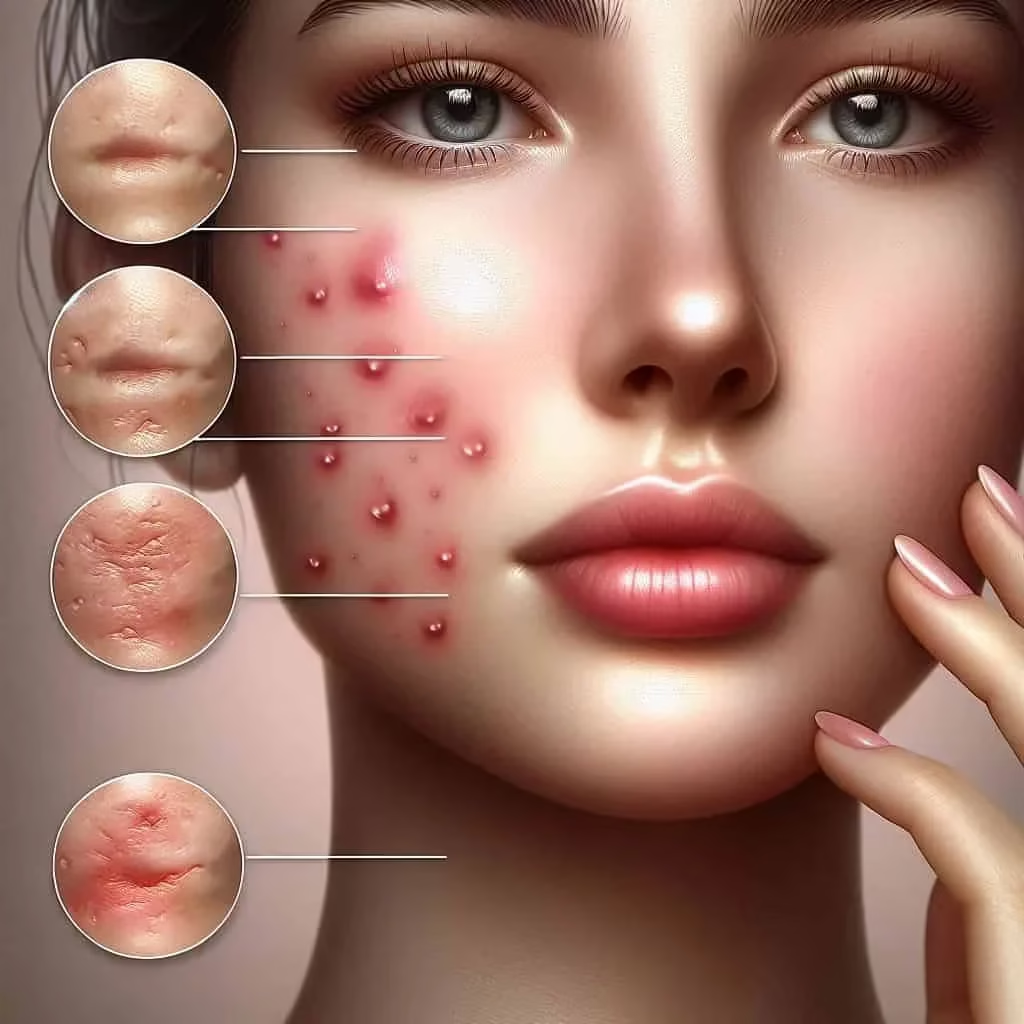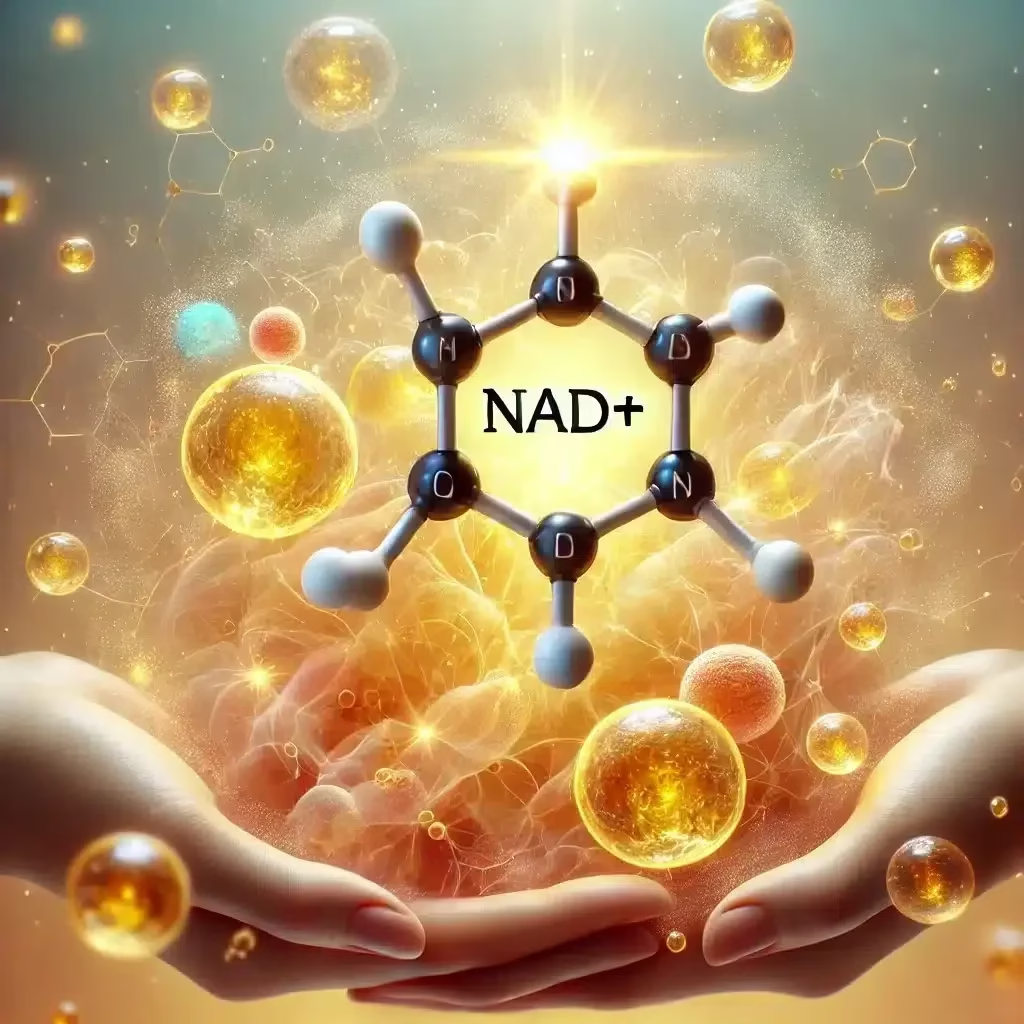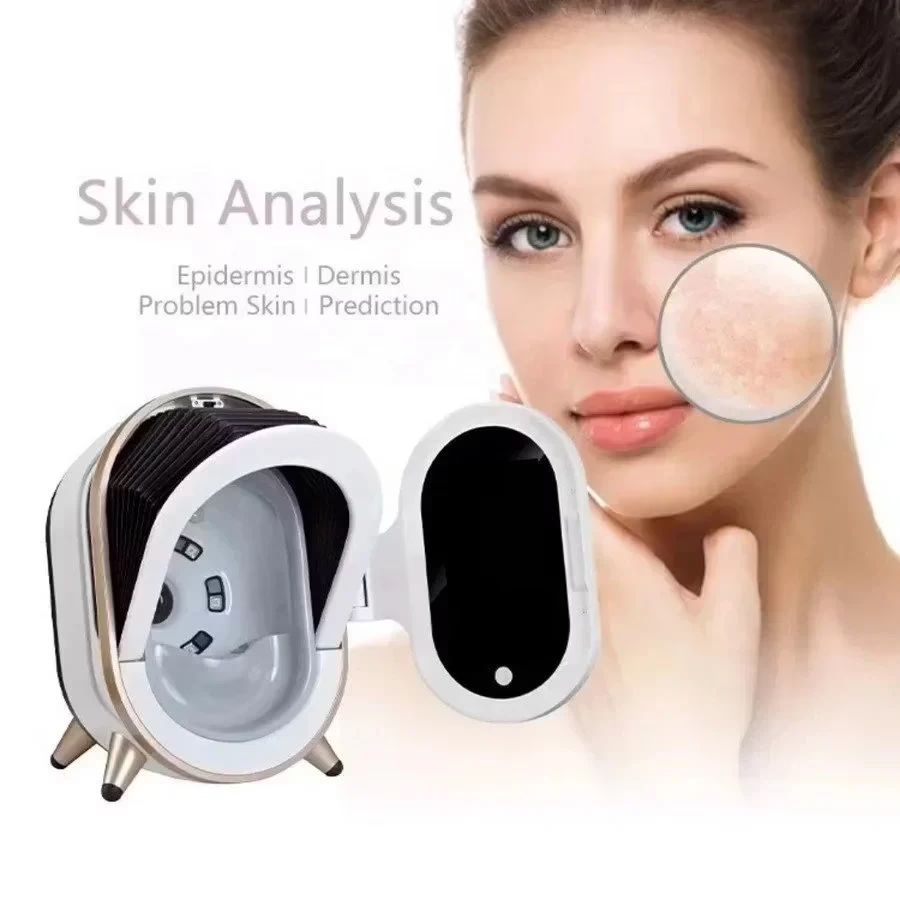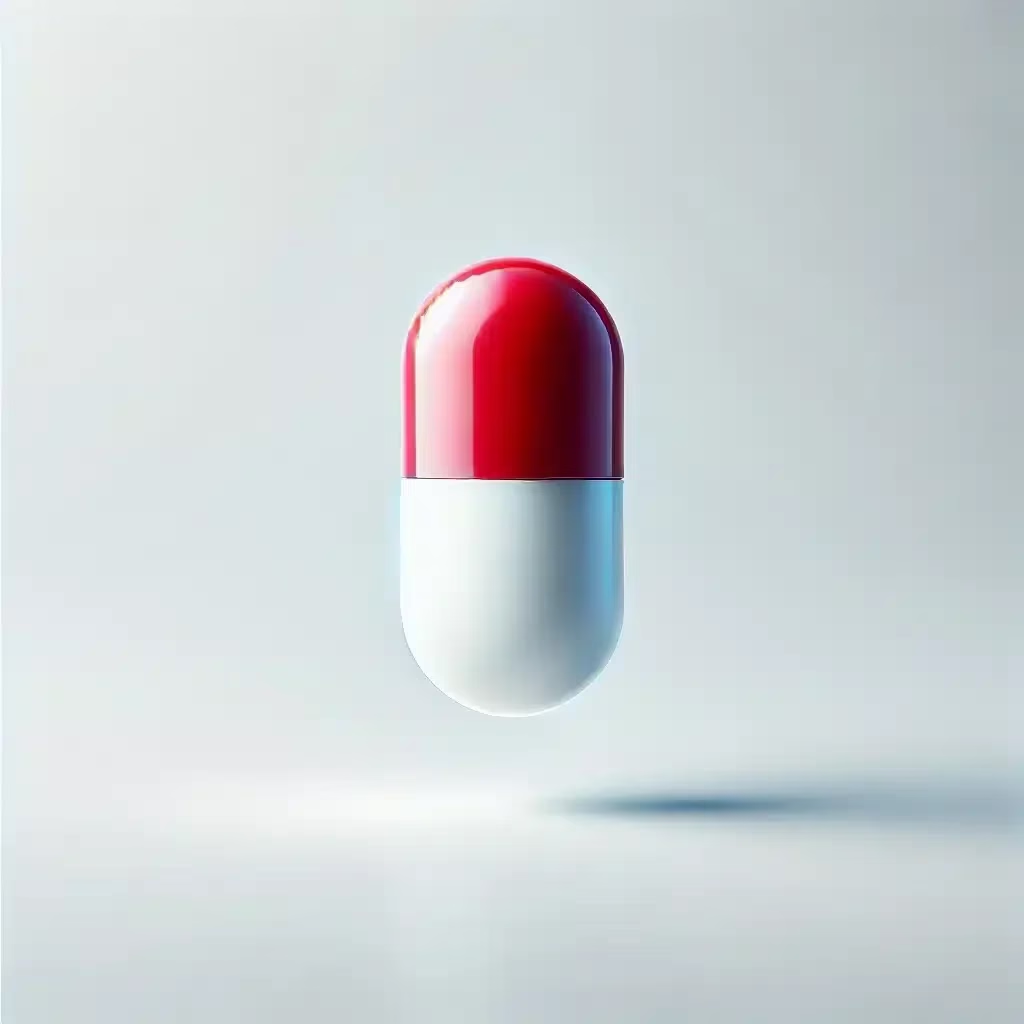Acne vulgaris remains one of the most common skin conditions worldwide, affecting up to 85% of adolescents and persisting into adulthood for many. Beyond the physical manifestations, its psychological impact can be profound, influencing self-esteem, social interactions, and quality of life.
The good news? We’re witnessing a revolution in acne treatment. From innovative formulations of established medications to groundbreaking therapies targeting the root causes of acne, the options for achieving clear skin have never been more promising. Read on to learn about the latest acne treatments.
Understanding Acne: More Than Just Spots
Acne develops when hair follicles become plugged with oil and dead skin cells. This creates an environment where bacteria thrive, leading to inflammation and the formation of various lesions.
Several factors contribute to acne development:
- Excess sebum production from overactive oil glands
- Abnormal shedding of skin cells that clog pores
- Proliferation of Cutibacterium acnes bacteria
- Inflammatory responses that cause redness and swelling
Understanding your specific acne type is crucial for effective treatment. Acne ranges from mild (scattered comedones or small papules) to severe (numerous nodules, cysts, and scarring).
Mild Acne Vulgaris: First-Line Approaches
Mild acne typically presents with scattered comedones or small inflammatory papules without scarring. It generally involves limited skin areas without the presence of nodules or extensive involvement.
Topical Retinoids: The Foundation of Treatment
Topical retinoids remain the cornerstone of acne therapy, working to normalise skin cell turnover and prevent the formation of microcomedones—the precursors to visible acne lesions.
These vitamin A derivatives (tretinoin, adapalene, tazarotene, and trifarotene) offer multiple benefits:
- They address both existing acne and prevent new lesions
- They work on both comedonal and inflammatory acne
- They provide long-term benefits when used consistently
For optimal results, apply a pea-sized amount to clean, dry skin at night. Begin with lower concentrations to minimise irritation, gradually increasing strength as tolerance improves.
Adapalene 0.1% gel is available without prescription in many countries, making it an accessible entry point for retinoid therapy.
Benzoyl Peroxide: Antimicrobial Power Without Resistance
Benzoyl peroxide offers powerful antimicrobial action without promoting bacterial resistance—a significant advantage over antibiotics.
Available in various formulations (cleansers, gels, creams) and concentrations (2.5-10%), benzoyl peroxide is highly versatile. Research indicates that 2.5% formulations can be as effective as higher concentrations with less irritation.
Apply once daily, typically in the morning, and be mindful that it can bleach fabrics and hair.
Topical Antibiotics: Strategic Antimicrobial Action
Clindamycin and erythromycin are commonly prescribed topical antibiotics that reduce bacterial populations and decrease inflammation.
To prevent antibiotic resistance—an increasing concern worldwide—these should always be combined with benzoyl peroxide. Fixed-combination products simplify this approach.
Combination Approaches: Enhanced Efficacy
Research consistently demonstrates that combining treatments yields superior results compared to monotherapy.
A typical regimen might include:
- Morning: Gentle cleanser followed by benzoyl peroxide
- Evening: Gentle cleanser followed by a topical retinoid
This combination addresses multiple acne pathways simultaneously—reducing bacteria, decreasing inflammation, and normalising skin cell turnover.
Breakthrough Innovations in Latest Acne Treatments
Recent years have witnessed remarkable innovations that are transforming acne management.
Triple-Combination Therapy
Perhaps the most significant advance in topical treatment is the introduction of fixed-dose triple-combination therapy combining clindamycin, adapalene, and benzoyl peroxide.
This formulation offers unprecedented efficacy, with clinical studies showing that more than 50% of patients achieve clear or near-clear skin with a 70% reduction in lesion counts.
The advanced vehicle minimises irritation while improving patient comfort, and the all-in-one approach significantly enhances treatment adherence.
Clascoterone: The First Topical Antiandrogen
Clascoterone 1% cream represents a genuine breakthrough as the first FDA-approved topical antiandrogen for acne.
Unlike systemic hormonal therapies restricted to certain patient groups, clascoterone:
- Can be used by both men and women
- Works by directly inhibiting androgen receptors in the skin
- Reduces sebum production and inflammation at the source
- Shows efficacy for both inflammatory and non-inflammatory lesions
This targeted approach to hormonal factors in acne provides a valuable option for patients unsuitable for systemic treatments.
1726 nm Laser Technology: Targeting the Sebaceous Gland
The introduction of 1726 nm lasers (including devices like AviClear and Accure) marks a paradigm shift in acne treatment by directly targeting sebaceous glands—the source of excess oil production.
This wavelength selectively heats and reduces the activity of sebaceous glands without damaging surrounding tissues.
Clinical results are impressive:
- Approximately 40% of patients with moderate to severe acne achieve clear or almost clear skin for up to six months post-treatment
- Most patients experience at least a 50% reduction in inflammatory lesions
- Benefits continue to improve for up to two years beyond treatment
- The technology is safe for all skin types
This advancement offers a non-pharmaceutical alternative for patients concerned about medication side effects or those who haven’t responded to traditional therapies.
Advanced Retinoid Formulations
Innovation in retinoid delivery systems has produced more tolerable and effective options:
- Trifarotene 0.005% cream: This fourth-generation retinoid selectively targets RAR-γ receptors found predominantly in the skin. Beyond acne treatment, it shows promise for atrophic acne scar therapy.
- Tazarotene 0.045% lotion: Utilising polymeric emulsion technology, this formulation enhances drug delivery while reducing irritation, providing efficacy equivalent to higher concentrations with better tolerability.
Topical Minocycline
Minocycline 4% foam provides a novel approach to antibiotic therapy without the systemic effects of oral antibiotics. Its foam vehicle allows for even application, particularly useful for treating truncal acne.
Moderate to Severe Acne: Systemic Approaches
When topical treatments provide insufficient improvement, systemic therapies become necessary.
Oral Antibiotics: Refined Approaches
While tetracyclines remain important for moderate to severe acne, newer options offer advantages:
Sarecycline: This narrow-spectrum tetracycline demonstrates fewer gastrointestinal side effects and reduced impact on the gut microbiome compared to older antibiotics.
Critically, oral antibiotics should be:
- Used in conjunction with topical treatments (particularly benzoyl peroxide)
- Prescribed for limited durations to minimise resistance
- Avoided as maintenance therapy when possible
Hormonal Therapies: Beyond Contraception
For women with hormonally-driven acne, several options show excellent efficacy:
- Combined oral contraceptives: Regulate hormones triggering sebum production
- Spironolactone: Blocks androgen receptors, reducing oil production
Recent research suggests that routine potassium monitoring may be unnecessary for healthy women taking spironolactone for acne—simplifying this treatment approach.
Isotretinoin: Evolution of the Gold Standard
For severe, resistant, or scarring acne, isotretinoin remains unmatched in efficacy. Micronised isotretinoin formulations improve bioavailability without requiring high-fat meals, enhancing convenience and potentially reducing side effects.
The introduction of digital monitoring systems has streamlined the safety protocols required for this powerful medication.
Special Considerations in Acne Management
Several factors require personalised approaches to acne treatment.
Acne in Skin of Colour
Patients with darker skin tones face additional challenges, including higher risks of post-inflammatory hyperpigmentation and more noticeable scarring.
Recommendations include:
- Early and aggressive treatment to prevent complications
- Careful introduction of potentially irritating treatments
- Consideration of adjunctive therapies for hyperpigmentation, such as azelaic acid
- Sun protection to prevent darkening of marks left by acne
Truncal Acne
Acne affecting the chest, back, and shoulders requires specific considerations:
- Difficult-to-reach areas benefit from sprays, foams, or wash-off products
- Body-specific formulations may be more practical than facial products
- Systemic therapy may be considered earlier due to application challenges
The trifarotene 0.005% cream is specifically approved for both facial and truncal acne, offering a unified approach to treatment.
Managing Post-Inflammatory Changes
Dealing with the aftermath of acne is often as important as treating active lesions:
- Hyperpigmentation: Responds to consistent retinoid use, azelaic acid, and targeted treatments like topical tranexamic acid
- Erythema: Persistent redness may benefit from pulsed dye laser treatments or topical agents targeting vascular inflammation
- Scarring: Early intervention with microneedling, laser resurfacing, or chemical peels can significantly improve outcomes
Creating an Effective Treatment Plan
A systematic approach to acne treatment typically follows this pattern:
- For mild comedonal acne: Start with a topical retinoid
- For mild papulopustular acne: Combine a topical retinoid with antimicrobials
- For moderate acne: Consider adding oral antibiotics to topical therapy
- For severe acne: Evaluate for early isotretinoin therapy or hormonal options
Allow 6-12 weeks before assessing treatment efficacy, as visible improvement takes time.
Lifestyle Considerations and Complementary Approaches
Beyond medical treatments, several additional strategies support acne improvement.
Evidence-Based Skincare
Proper skincare complements medical treatment:
- Gentle cleansing: Twice daily with pH-balanced, non-stripping cleansers
- Avoiding irritants: Minimise harsh scrubs, astringents, and alcohol-based products
- Non-comedogenic products: Choose skincare and cosmetics that won’t clog pores
- Appropriate moisturising: Use lightweight, oil-free formulations to counteract treatment-related dryness
Nutritional Factors
While diet alone rarely resolves acne, certain dietary modifications show promise:
- Low glycaemic load diets: May help reduce acne severity in some individuals
- Dairy consumption: Limited evidence suggests dairy products might trigger acne in susceptible people
- Omega-3 fatty acids: Anti-inflammatory properties may provide modest benefits
Psychological Support
The psychological impact of acne remains underappreciated:
- Acne significantly affects quality of life, comparable to chronic conditions like asthma and epilepsy
- Treatment plans should address both physical symptoms and psychological wellbeing
- Cognitive-behavioural approaches can help manage the psychological burden of acne
Maintenance and Prevention
Once acne improves, maintenance therapy prevents recurrence:
- Topical retinoids remain the cornerstone of maintenance therapy
- Simplified regimens improve long-term adherence
- Benzoyl peroxide may be needed periodically to maintain antimicrobial effects
- Sun protection remains essential, particularly with retinoid use
Emerging Therapies on the Horizon
The future of acne treatment looks increasingly sophisticated:
Microbiome-Based Approaches
The skin microbiome plays a crucial role in acne development:
- Microbiome-targeted prebiotics: Support beneficial bacteria
- Probiotic treatments: Restore balance to skin microflora
- Phage therapy: Specifically target problematic bacteria while preserving beneficial microbes
Personalised Medicine
Genetic and microbiome profiling may eventually allow truly individualised acne treatment:
- Identifying specific acne subtypes based on underlying mechanisms
- Matching treatments to individual biological factors
- Predicting treatment response before initiating therapy
Novel Delivery Systems
Advancements in drug delivery continue to improve treatment efficacy and tolerability:
- Microencapsulation technology: Enhances delivery while reducing irritation
- Nano-delivery systems: Target specific skin structures more precisely
- Controlled-release formulations: Maintain consistent drug levels with fewer applications
Practical Tips for Treatment Success
Several practical considerations can significantly improve treatment outcomes:
Optimising Adherence
Successful acne treatment depends heavily on consistent application:
- Use reminder systems (phone alarms, app notifications) for regular application
- Incorporate treatments into existing routines (morning/evening hygiene)
- Choose vehicles (gels, creams, foams) based on personal preference
- Understand that visible improvement takes time—typically 6-12 weeks minimum
Managing Side Effects
Proactively addressing side effects improves treatment continuation:
- Retinoid irritation: Start with lower concentrations, apply to dry skin, buffer with moisturiser if needed
- Dryness: Use non-comedogenic moisturisers as needed
- Sun sensitivity: Apply broad-spectrum sunscreen daily
When to Seek Specialist Care
Consider dermatology referral for:
- Severe or scarring acne
- Acne unresponsive to over-the-counter treatments
- Special populations (very young patients, pregnancy-related acne)
- Psychological distress disproportionate to acne severity
Conclusion: A New Era in Acne Management
The landscape of acne treatment in 2025 offers unprecedented options for effective management across all severity levels. From enhanced formulations of established treatments to revolutionary approaches targeting the fundamental causes of acne, the therapeutic arsenal continues to expand.
The triple-combination therapy, topical antiandrogens like clascoterone, and targeted technologies like the 1726 nm laser represent significant breakthroughs that are changing treatment paradigms. These innovations complement our established understanding of retinoids, antimicrobials, and systemic therapies.
Perhaps most importantly, the modern approach to acne recognises its multifactorial nature and significant psychological impact. Treatment plans increasingly address both the physical manifestations and emotional toll of this common condition.
With proper assessment, individualised treatment selection, realistic expectations, and consistent follow-up, most people with acne can achieve significant improvement. As research advances, we can anticipate even more sophisticated and targeted approaches to this common but impactful skin condition.
For those struggling with acne, the message is clear: effective treatments exist, innovations continue to emerge, and clear skin is an achievable goal for virtually everyone affected by this condition.
FAQs About the Latest Acne Treatments
1. How does the new 1726 nm laser treatment work compared to traditional acne therapies, and is it suitable for everyone?
The 1726 nm laser represents a revolutionary approach to acne treatment by directly targeting sebaceous glands—the source of excess oil production that contributes to acne formation. Unlike topical or oral medications that work through chemical pathways, this laser uses a specific wavelength that selectively heats and reduces the activity of oil-producing glands without damaging surrounding tissues.
Clinical studies show it works effectively for moderate to severe acne, with benefits potentially lasting up to two years after a standard treatment course of 3-4 sessions. Unlike isotretinoin, it doesn’t cause systemic side effects such as dryness or mood changes, making it suitable for patients who cannot take or prefer to avoid oral medications.
The laser is safe for all Fitzpatrick skin types (I-VI), though treatments are typically more accessible at specialised dermatology clinics and may not be covered by insurance. Patients with active cystic breakouts, keloid tendency, or certain photosensitising medications may require additional assessment before treatment.
2. What makes triple-combination therapy more effective than using separate acne products, and how do I know if it’s right for my specific type of acne?
Triple-combination therapy (containing clindamycin, adapalene, and benzoyl peroxide) outperforms individual products by simultaneously targeting multiple acne pathways: reducing bacteria, decreasing inflammation, normalising cell turnover, and preventing microcomedone formation. This comprehensive approach addresses both existing acne and prevents new lesions from forming.
This therapy is particularly effective for mixed acne (both comedonal and inflammatory) and moderate acne that hasn’t responded adequately to single agents. Studies show significantly higher clearance rates (50-70% reduction in lesions) compared to monotherapy.
You’re likely a good candidate if you have multiple types of acne lesions, require multiple separate products currently, struggle with treatment adherence, or experience moderate inflammation. However, those with extremely sensitive skin, specific allergies to components, or very mild acne may benefit from more targeted single-agent approaches. A dermatologist can determine if your skin condition and severity level make you an ideal candidate.
3. How long should I expect to wait before seeing results from modern acne treatments, and what should I do if I experience irritation?
Most acne treatments, including advanced formulations, require 6-12 weeks for noticeable improvement. Initial results may be visible within 4 weeks, but full benefits develop gradually as the treatment addresses deeper acne formation processes. Topical retinoids and combination therapies often show progressive improvement over 3-6 months of consistent use.
Expect a pattern of improvement where existing lesions resolve and fewer new breakouts develop. Some treatments, particularly retinoids, may cause a temporary “purging” phase where acne appears to worsen before improving—this typically resolves within 2-4 weeks.
If you experience irritation:
- Reduce application frequency (every other day instead of daily)
- Apply to completely dry skin (wait 20-30 minutes after washing)
- Use a pea-sized amount for the entire face
- Apply a non-comedogenic moisturiser before or after treatment (depending on product instructions)
- Avoid additional exfoliating products or harsh cleansers
If irritation persists despite these measures, consult your dermatologist to adjust concentration or formulation. Don’t discontinue treatment entirely without seeking professional advice, as modifications can often maintain efficacy while reducing side effects.
4. How should acne treatment approaches differ for people with darker skin tones, and what specific products are recommended to prevent post-inflammatory hyperpigmentation?
Acne management requires special consideration for darker skin tones (Fitzpatrick types IV-VI) due to the heightened risk of post-inflammatory hyperpigmentation (PIH)—dark spots that can persist long after acne resolves.
The treatment approach should:
- Prioritise anti-inflammatory strategies to reduce the trigger for PIH
- Introduce potentially irritating treatments (like retinoids) gradually
- Incorporate agents that address both acne and hyperpigmentation
- Emphasise consistent sun protection to prevent darkening of PIH
Specific recommended products include:
- Adapalene 0.1% (less irritating than other retinoids while effective for both acne and PIH)
- Azelaic acid 15-20% (uniquely addresses both acne and hyperpigmentation)
- Topical niacinamide 4-5% (anti-inflammatory that also inhibits melanin transfer)
- Combination products with lower concentrations of actives to reduce irritation risk
- Broad-spectrum SPF 30+ sunscreen formulated for acne-prone skin
For established PIH, consider products containing tranexamic acid, vitamin C, or cysteamine under dermatologist guidance. Chemical peels should be approached cautiously, with mandelic acid or lower concentrations of glycolic acid preferred over more aggressive options.
5. Can dietary changes genuinely improve acne, and what specific modifications are supported by current research?
Emerging research increasingly supports the role of dietary factors in acne pathogenesis, though responses vary significantly between individuals. The strongest evidence supports the following modifications:
- Low glycaemic load diet: Multiple randomized controlled trials show reduced acne severity with diets that minimize blood sugar spikes. This means reducing refined carbohydrates (white bread, sugary foods) and favoring complex carbohydrates (whole grains, legumes, vegetables). A 2021 meta-analysis found a 25-50% reduction in acne lesions with sustained low glycaemic load diets.
- Dairy modification: Observational studies consistently link dairy consumption—particularly skim milk—with acne exacerbation in susceptible individuals. The proposed mechanism involves dairy’s influence on insulin-like growth factor-1 (IGF-1) and hormonal pathways. Consider a 4-6 week trial elimination of dairy, particularly if you have persistent jawline or adult female acne.
- Omega-3 supplementation: Moderate evidence suggests that increasing omega-3 fatty acids (from fatty fish, flaxseed, or supplements providing 1000-2000mg daily) may reduce inflammatory acne through anti-inflammatory mechanisms.
- Balanced zinc intake: Several studies suggest zinc supplementation (30mg elemental zinc daily) may benefit inflammatory acne, particularly in individuals with suboptimal zinc levels.
These dietary approaches should complement, not replace, evidence-based medical treatments. Individual responses vary considerably, and dietary modifications typically require 2-3 months of consistent implementation to evaluate effectiveness.









